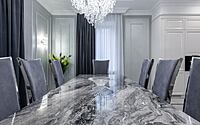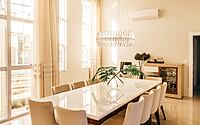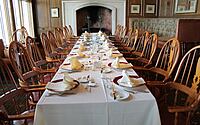The Resilience of Formal Dining Rooms: An Ever-Evolving Space in Modern Homes
In an age where open-concept layouts and multi-functional spaces have become the norm, one might question the relevance of the formal dining room in modern home design. However, despite the changing preferences and evolving lifestyle trends, formal dining rooms have managed to maintain their place in the hearts and homes of many individuals. With a timeless allure and the promise of creating cherished memories, these designated spaces continue to captivate homeowners and designers alike, providing a sanctuary for celebrating the art of hospitality. You will always want a space to serve your guests passion fruit wine and the dining room is the place to do it.
The Evolution of the Formal Dining Room
The concept of a designated space for dining has been a part of human culture since ancient times. In the past, formal dining rooms were reserved for the elite and noble classes to host grand banquets and entertain guests. These extravagant spaces often featured opulent furnishings, intricate decorations, and ornate chandeliers. However, over the centuries, the perception of dining rooms has evolved, and they have become more accessible to the wider population.
Throughout the 20th century, formal dining rooms gained popularity as a symbol of prosperity and social status. Traditional designs characterized by dark wood furniture and fine china sets were common, reflecting a sense of elegance and refinement. Families gathered around the dining table to share meals, celebrate special occasions, and foster meaningful connections.
Challenges to the Formal Dining Room
As society continued to transform, so did the way people interacted within their homes. The late 20th and early 21st centuries saw a shift towards more informal living spaces and open floor plans that encouraged family members to be more interconnected. The boundaries between the kitchen, living room, and dining area blurred, fostering a more casual and relaxed lifestyle.
The advent of smaller living spaces, particularly in urban settings, posed a challenge to the traditional formal dining room. With limited square footage, homeowners often sought creative solutions to make the most of their available space. Many opted for multipurpose rooms, combining the dining area with the living room or kitchen, to accommodate their dynamic lifestyle.
Reasons for the Endurance of Formal Dining Rooms
Surprisingly, despite the challenges and changing trends, formal dining rooms have not faded away into obscurity. Instead, they have evolved and adapted to suit the needs and preferences of modern homeowners. Several factors contribute to their continued popularity:
-
Tradition and Nostalgia: For many, the formal dining room represents a tradition passed down through generations. It holds sentimental value as a space where cherished family memories were made and traditions were preserved.
Entertainment and Special Occasions: While everyday dining may have become more casual, formal dining rooms remain the preferred choice for hosting guests and celebrating special events. These rooms provide an intimate and elegant setting, setting the stage for memorable gatherings. - Aesthetic Appeal: Despite evolving design trends, there is a timeless beauty associated with well-designed formal dining rooms. Meticulously curated spaces with elegant furniture, tasteful decor, and ambient lighting evoke a sense of sophistication and refinement.
- Unplugged Connectivity: The formal dining room offers a unique opportunity for digital detoxification. Away from distractions like television and electronic devices, it encourages meaningful conversations and strengthened family bonds.
- Value Addition: Formal dining rooms continue to be an attractive feature for potential homebuyers. As a symbol of elegance and taste, these spaces can enhance a home’s resale value and marketability.
- Creative Adaptations: Homeowners and designers have found innovative ways to incorporate formal dining spaces into modern floor plans. Combining open layouts with defined dining areas, or integrating a dining nook into a kitchen, strikes a balance between formality and practicality.
In conclusion, formal dining rooms have proven their resilience in the face of evolving lifestyle trends and design preferences. Although they may no longer be the focal point of daily family meals, these spaces retain their allure as settings for special occasions and intimate gatherings. Embracing the essence of tradition, elegance, and nostalgia, formal dining rooms continue to find relevance in modern homes. As the dynamics of family life and interior design evolve, this timeless space demonstrates its capacity to adapt and maintain its position as an essential component of the home, fostering warmth, connection, and lasting memories.
- by Matt Watts





